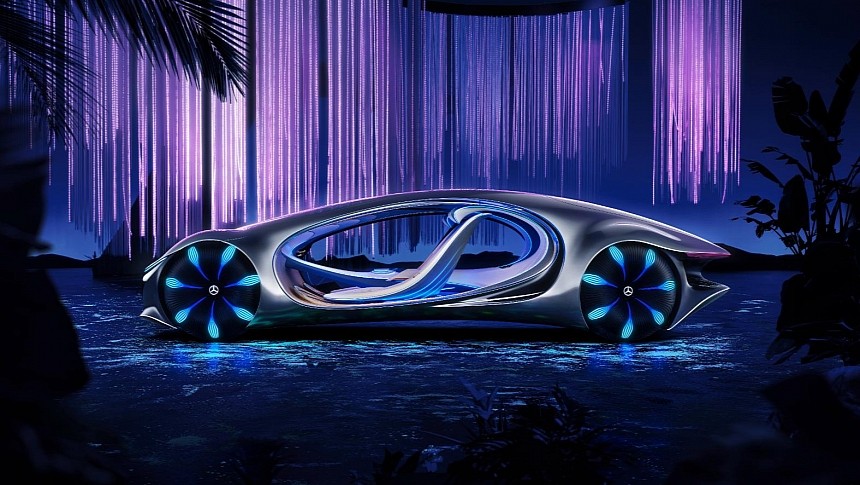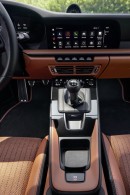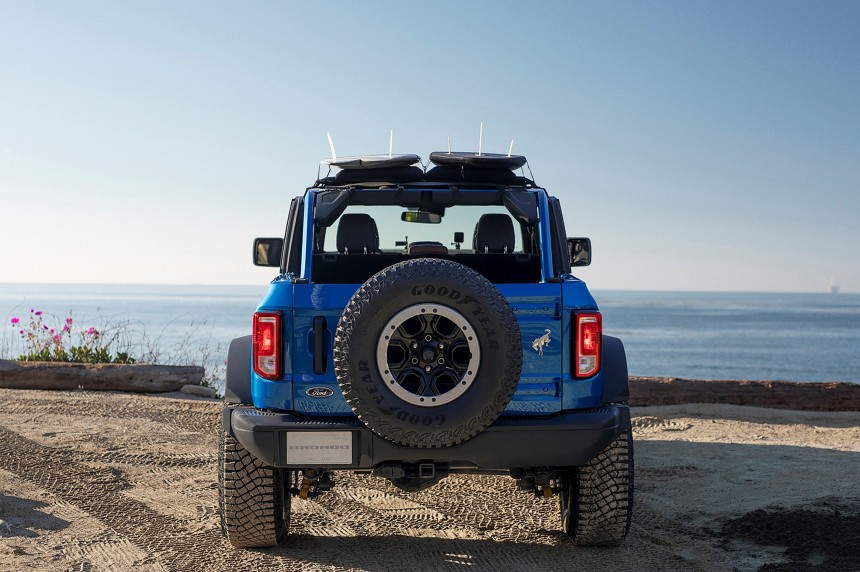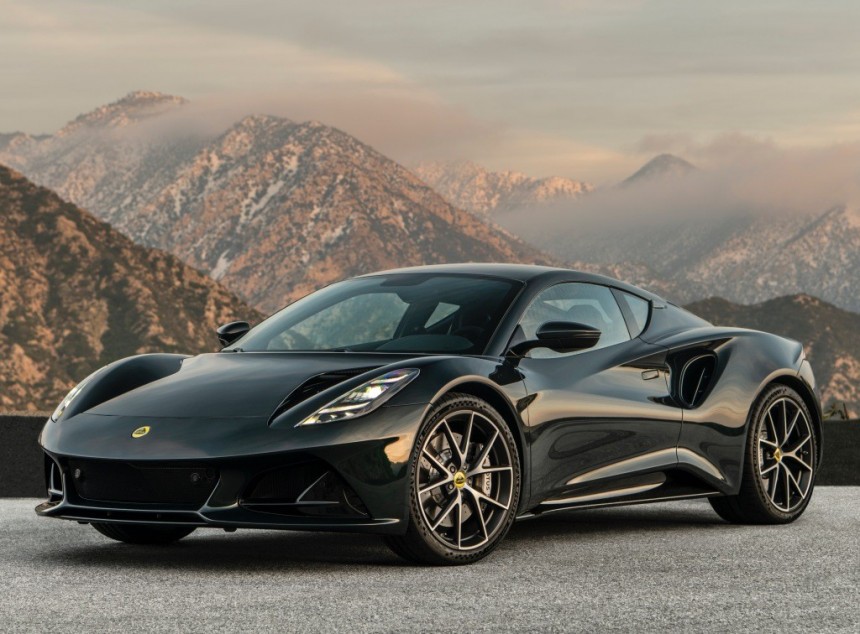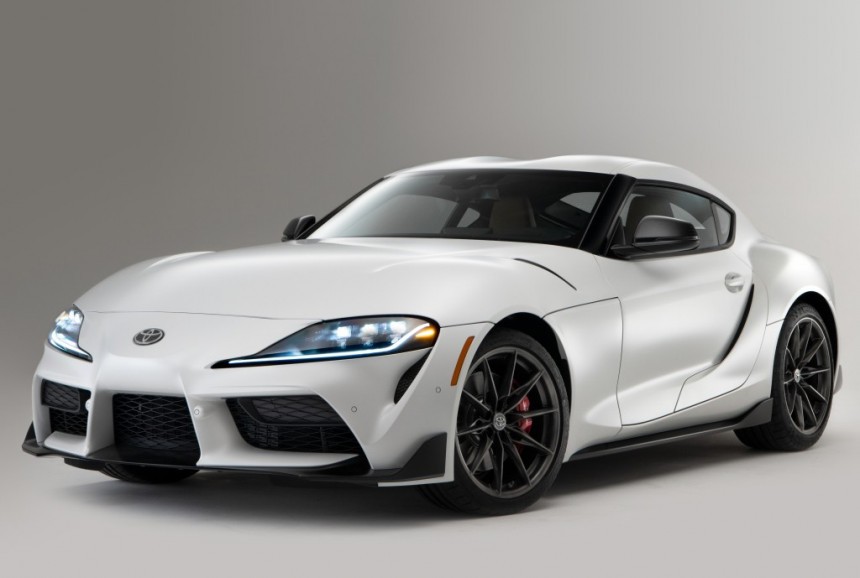We can all agree that cars have evolved exponentially in the last couple of decades. The transformation of automobiles and technology available to the public has been nothing short of extraordinary lately.
No matter what area of discussion, there is almost no similarity between the level of technology found on a passenger car developed in the early 2000s or earlier and one available in today's market. It's almost like comparing a calculator with an abacus.
First off, in case you haven't noticed, today's cars are a heck of a lot faster than their predecessors. We're now living in an age where a hatchback can have more horsepower than what was considered to be a supercar in the 1980s.
Even more astonishing, a modern 2023 hot hatch can outpace track-ready supercars from a decade ago around the challenging Nurburgring. Consider this: a 2024 Honda Civic Type R can do a lap of the Green Hell faster than a friggin' Lamborghini Murcielago SuperVeloce LP670-4.
A quick glance at crash test results and safety features present on modern mainstream cars and comparing them even to premium vehicles from a few decades ago will paint a similar conclusion. In the early 2000s, you were driving a luxury sedan if you had side head and torso airbags.
Nowadays, you get automatic braking systems that use advanced cameras and sensors in cheap sub-compacts, which are even required by law in most civilized countries. On top of it, crash test organizations worldwide have gradually made their tests harder to pass, yet more and more cars manage to pass them with full marks.
Powered windows were a nice feature on a 2000s Kia, weren't they? Well, nowadays, the EV6 GT offers things like an augmented reality head-up display or semi-autonomous adaptive cruise control. It can also park itself, has semi-autonomous functions on the highway, and can hit 100 kph (62 mph) from a standing start in just 3.5 seconds. I'm still talking about a mainstream and relatively inexpensive family crossover, not a supercar. If that's not progress, I don't know what is.
With that in mind, progress doesn't always translate to advancements on all fronts, and today, I want to talk about some areas of automotive design that seem to be going backward.
An escalating predicament is the absence of a spare wheel on modern cars, a concern that a growing number of carmakers appear hesitant to resolve.
One of the significant drawbacks of rapid improvements in the speed, safety, or comfort of cars is the addition of extra weight. This comes at a time when the proliferation of EVs brings even more weight on those poor tires, which in turn translates to that weird software-induced handling I was talking about a few weeks ago.
First, the so-called downsizing trend saw larger, naturally aspirated engines being replaced by tiny turbocharged ones with fewer cylinders. As it turns out, there is a replacement for displacement, but those powertrains come with their fair share of caveats.
A smaller turbocharged engine is almost as big and heavy as a larger N/A because of all the extra plumbing, the turbo (s), and intercooler(s). That extra weight directly translates into worse fuel economy, braking, and handling. So you win performance and fuel economy, but you also lose some.
For performance cars, high-tech aerodynamic bits like a flatter floor and a rear diffuser take up volume from the trunk, and so does a clever rear limited-slip differential. The latest Mercedes-AMG plug-in hybrids like the C 63 or the S 63 offer mind-bending performance thanks to a so-called P3 layout, in which an F1-inspired cooled battery and electric motor are integrated with a limited-slip differential AND a two-speed gearbox on top of the rear axle.
In theory, that arrangement allows for an 'always-on' hybrid system, but it also leaves the cars with the same trunk as a supercar and makes them as heavy as an electric SUV. The C 63, as compact as it is, weighs more than an entry-level S-Class and has less luggage compartment volume than the Mercedes-AMG GT, which is a two-door super sports car.
While that plug-in hybrid setup virtually leaves no room for a spare tire, regular C-Class versions (and most Mercedes models) no longer offer the option for a spare anyway.
It's not just Mercedes-Benz, but dozens of other carmakers who have decided to leave their customers stranded on the side of the road in the case of a flat tire.
Sure, sometimes they offer options like a repair kit, a collapsible spare, or one of those skinny space-saver tires. Some even still offer a run-flat option, but none of these are as good as an actual full-size spare for a few simple reasons.
First of all, a repair kit, which involves a special sticky sealant that you spray into the tire and an air compressor, only works for small holes on the tire thread. It doesn't work if there is a slit or the hole is on the sidewall. It also renders the tire unrepairable at a tire shop and affects your TMPS (tire pressure monitoring system).
Second of all, a space saver or a collapsible spare tire is obviously much smaller than a regular tire, meaning you're only allowed to drive with it at a certain speed and for a limited distance, again rendering it obsolete after a while.
Third of all, run-flat tires, apart from making the ride much stiffer and costing almost twice as a regular tire, cannot be repaired once they get a flat, only allowing you to continue driving for a limited distance and at a lower speed after they get punctured.
The only real option in case you're ever stranded on the side of the road with a flat tire is to change it with a full-size spare. Do you know how many modern cars still come with a full-size spare tire? Too few to mention.
In the UK, for example, the Royal Automobile Club recently did a study on no less than 300 cars from 28 manufacturers and found that only 8 of them come with some version of a spare wheel as a standard. That's less than 3 percent!
"It's fine. I'll fork out the cash and get a G-Class. Those all come with five identical wheels!" - you'll say, but you'd make a mistake. This may come as a surprise, but only the G 63 4X4 Squared comes with a full-size spare tire, while the rest carry a wheel that is slightly narrower than the other four and can only be used for a limited distance.
Yeah, a full-size fifth wheel on a car adds some unnecessary weight, and some people never get flat tires, but that doesn't mean that it has suddenly become redundant on contemporary cars.
Do you know what else adds weight? Most of the things that make modern cars better than their predecessors, and I'm also including batteries here.
Never mind full EVs, but hybrids and plug-in hybrids, whose weight has recently spiraled out of control. The BMW XM is technically a successor to the M1, the lightweight mid-engine supercar that started this whole 'M' thing at BMW, yet it weighs close to three metric tons.
Okay, what about non-hybrid M cars, like the M2 or the M3? Well, the latest M2 with an automatic weighs 1800 kg (3,968 lbs), which is a lot less than three tons, but it's also dangerously close to the 1850 kg (4,078 lbs) of the much, much larger and now out of production M5 CS, which now seems like a featherweight. The upcoming M5 CS replacement will have a plug-in hybrid V8, so you can expect at least two and a half metric tons of weight again.
Don't even get me started on the weight of full-electric cars that need big batteries. Thankfully, vehicles like the Hummer EV and the Tesla Cybertruck weren't developed for European roads because you would need a truck driving license on account of their weight to be able to drive them. The Hummer weighs over 4 metric tons.
Last but definitely not least, am I the only one who has noticed that many cars are becoming uglier with each new generation? Maybe I'm just getting older, and beauty is in the eye of the beholder anyway, but there is some truth behind every statement, no matter how subjective.
While making intricate shapes with metal and other materials has become a lot easier with the advent of technology, 3d printing, and so on, rules and regulations regarding the shape of a production car have made the job of designers much worse.
For example, the European Commission mandates that carmakers should take measures aimed at enhancing physical access to the car, simplifying vehicle operation, or improving the safety of the occupants. The first two types of measures are primarily associated with vehicle design, while the latter focuses on vehicle safety.
Indirectly, those translate into form following function, which makes the cars better and safer, but often uglier. The headlights' height, the front overhang's size, and even a vehicle's proportion are mostly dictated by engineers rather than designers nowadays.
Why does the latest BMW 5 Series have the proportions of a front-wheel-drive car? Well, because it's safer, both for its occupants and for pedestrians.
Why do many modern cars not have the steering wheel aligned with the driver's seat? Easy, because during development, someone realized a little too late that they needed more room between the door and the seat in case of a side impact. It's easier to move the seat than the steering column.
Why is the Toyota GR Supra filled with fake intakes and unnecessary aero elements that serve no purpose on its exterior? Well, because the BMW Z4 underneath has a bunch of so-called hard points that cannot be changed unless Toyota designs an entirely new car, which it didn't initially for cost reasons.
These are the problems nobody likes to discuss in modern cars. Never mind the loss of driving feel or exhaust sound, we are currently witnessing the extinction of what used to be called a car. And if it all continues at the same rate, in a couple of decades, we won't even have personal cars anymore but pods that drive themselves and have no need for handling, lightweight design, or spare tires because they are public transportation. They don't even need to look the part, and if you get a flat, a new one can pick you up in minutes from wherever you are stranded.
First off, in case you haven't noticed, today's cars are a heck of a lot faster than their predecessors. We're now living in an age where a hatchback can have more horsepower than what was considered to be a supercar in the 1980s.
Even more astonishing, a modern 2023 hot hatch can outpace track-ready supercars from a decade ago around the challenging Nurburgring. Consider this: a 2024 Honda Civic Type R can do a lap of the Green Hell faster than a friggin' Lamborghini Murcielago SuperVeloce LP670-4.
A quick glance at crash test results and safety features present on modern mainstream cars and comparing them even to premium vehicles from a few decades ago will paint a similar conclusion. In the early 2000s, you were driving a luxury sedan if you had side head and torso airbags.
Nowadays, you get automatic braking systems that use advanced cameras and sensors in cheap sub-compacts, which are even required by law in most civilized countries. On top of it, crash test organizations worldwide have gradually made their tests harder to pass, yet more and more cars manage to pass them with full marks.
Powered windows were a nice feature on a 2000s Kia, weren't they? Well, nowadays, the EV6 GT offers things like an augmented reality head-up display or semi-autonomous adaptive cruise control. It can also park itself, has semi-autonomous functions on the highway, and can hit 100 kph (62 mph) from a standing start in just 3.5 seconds. I'm still talking about a mainstream and relatively inexpensive family crossover, not a supercar. If that's not progress, I don't know what is.
With that in mind, progress doesn't always translate to advancements on all fronts, and today, I want to talk about some areas of automotive design that seem to be going backward.
Sometimes You Need a Fifth Wheel
One of the significant drawbacks of rapid improvements in the speed, safety, or comfort of cars is the addition of extra weight. This comes at a time when the proliferation of EVs brings even more weight on those poor tires, which in turn translates to that weird software-induced handling I was talking about a few weeks ago.
First, the so-called downsizing trend saw larger, naturally aspirated engines being replaced by tiny turbocharged ones with fewer cylinders. As it turns out, there is a replacement for displacement, but those powertrains come with their fair share of caveats.
A smaller turbocharged engine is almost as big and heavy as a larger N/A because of all the extra plumbing, the turbo (s), and intercooler(s). That extra weight directly translates into worse fuel economy, braking, and handling. So you win performance and fuel economy, but you also lose some.
For performance cars, high-tech aerodynamic bits like a flatter floor and a rear diffuser take up volume from the trunk, and so does a clever rear limited-slip differential. The latest Mercedes-AMG plug-in hybrids like the C 63 or the S 63 offer mind-bending performance thanks to a so-called P3 layout, in which an F1-inspired cooled battery and electric motor are integrated with a limited-slip differential AND a two-speed gearbox on top of the rear axle.
In theory, that arrangement allows for an 'always-on' hybrid system, but it also leaves the cars with the same trunk as a supercar and makes them as heavy as an electric SUV. The C 63, as compact as it is, weighs more than an entry-level S-Class and has less luggage compartment volume than the Mercedes-AMG GT, which is a two-door super sports car.
While that plug-in hybrid setup virtually leaves no room for a spare tire, regular C-Class versions (and most Mercedes models) no longer offer the option for a spare anyway.
It's not just Mercedes-Benz, but dozens of other carmakers who have decided to leave their customers stranded on the side of the road in the case of a flat tire.
Sure, sometimes they offer options like a repair kit, a collapsible spare, or one of those skinny space-saver tires. Some even still offer a run-flat option, but none of these are as good as an actual full-size spare for a few simple reasons.
First of all, a repair kit, which involves a special sticky sealant that you spray into the tire and an air compressor, only works for small holes on the tire thread. It doesn't work if there is a slit or the hole is on the sidewall. It also renders the tire unrepairable at a tire shop and affects your TMPS (tire pressure monitoring system).
Second of all, a space saver or a collapsible spare tire is obviously much smaller than a regular tire, meaning you're only allowed to drive with it at a certain speed and for a limited distance, again rendering it obsolete after a while.
Third of all, run-flat tires, apart from making the ride much stiffer and costing almost twice as a regular tire, cannot be repaired once they get a flat, only allowing you to continue driving for a limited distance and at a lower speed after they get punctured.
The only real option in case you're ever stranded on the side of the road with a flat tire is to change it with a full-size spare. Do you know how many modern cars still come with a full-size spare tire? Too few to mention.
In the UK, for example, the Royal Automobile Club recently did a study on no less than 300 cars from 28 manufacturers and found that only 8 of them come with some version of a spare wheel as a standard. That's less than 3 percent!
"It's fine. I'll fork out the cash and get a G-Class. Those all come with five identical wheels!" - you'll say, but you'd make a mistake. This may come as a surprise, but only the G 63 4X4 Squared comes with a full-size spare tire, while the rest carry a wheel that is slightly narrower than the other four and can only be used for a limited distance.
Yeah, a full-size fifth wheel on a car adds some unnecessary weight, and some people never get flat tires, but that doesn't mean that it has suddenly become redundant on contemporary cars.
Complicate, Then Add Weightiness
Never mind full EVs, but hybrids and plug-in hybrids, whose weight has recently spiraled out of control. The BMW XM is technically a successor to the M1, the lightweight mid-engine supercar that started this whole 'M' thing at BMW, yet it weighs close to three metric tons.
Okay, what about non-hybrid M cars, like the M2 or the M3? Well, the latest M2 with an automatic weighs 1800 kg (3,968 lbs), which is a lot less than three tons, but it's also dangerously close to the 1850 kg (4,078 lbs) of the much, much larger and now out of production M5 CS, which now seems like a featherweight. The upcoming M5 CS replacement will have a plug-in hybrid V8, so you can expect at least two and a half metric tons of weight again.
Don't even get me started on the weight of full-electric cars that need big batteries. Thankfully, vehicles like the Hummer EV and the Tesla Cybertruck weren't developed for European roads because you would need a truck driving license on account of their weight to be able to drive them. The Hummer weighs over 4 metric tons.
The Ugly Ducklings
While making intricate shapes with metal and other materials has become a lot easier with the advent of technology, 3d printing, and so on, rules and regulations regarding the shape of a production car have made the job of designers much worse.
For example, the European Commission mandates that carmakers should take measures aimed at enhancing physical access to the car, simplifying vehicle operation, or improving the safety of the occupants. The first two types of measures are primarily associated with vehicle design, while the latter focuses on vehicle safety.
Indirectly, those translate into form following function, which makes the cars better and safer, but often uglier. The headlights' height, the front overhang's size, and even a vehicle's proportion are mostly dictated by engineers rather than designers nowadays.
Why does the latest BMW 5 Series have the proportions of a front-wheel-drive car? Well, because it's safer, both for its occupants and for pedestrians.
Why do many modern cars not have the steering wheel aligned with the driver's seat? Easy, because during development, someone realized a little too late that they needed more room between the door and the seat in case of a side impact. It's easier to move the seat than the steering column.
Why is the Toyota GR Supra filled with fake intakes and unnecessary aero elements that serve no purpose on its exterior? Well, because the BMW Z4 underneath has a bunch of so-called hard points that cannot be changed unless Toyota designs an entirely new car, which it didn't initially for cost reasons.
These are the problems nobody likes to discuss in modern cars. Never mind the loss of driving feel or exhaust sound, we are currently witnessing the extinction of what used to be called a car. And if it all continues at the same rate, in a couple of decades, we won't even have personal cars anymore but pods that drive themselves and have no need for handling, lightweight design, or spare tires because they are public transportation. They don't even need to look the part, and if you get a flat, a new one can pick you up in minutes from wherever you are stranded.
